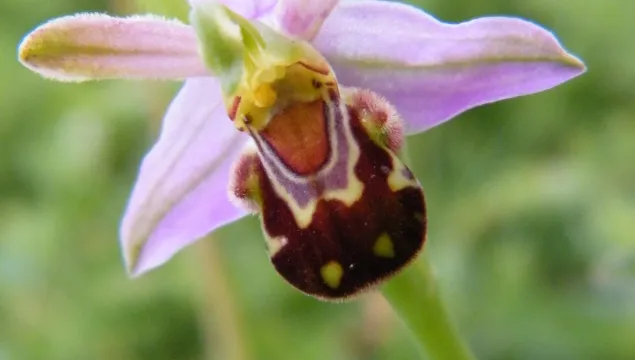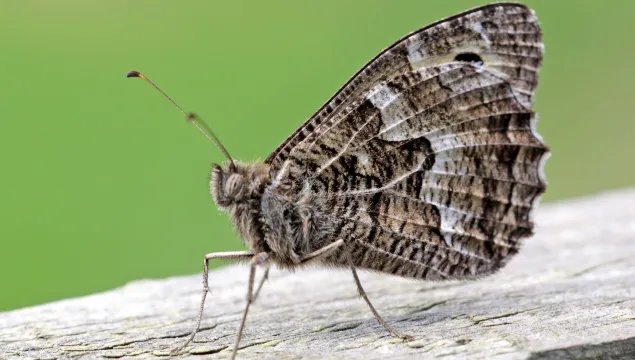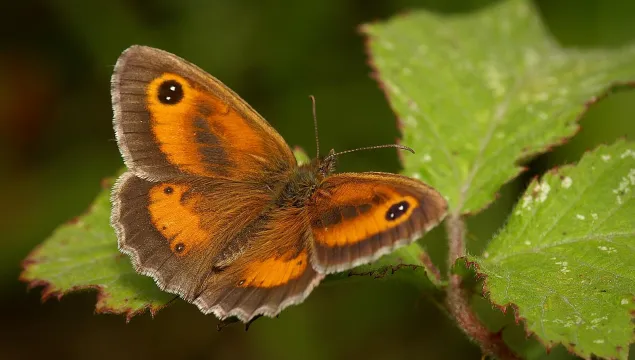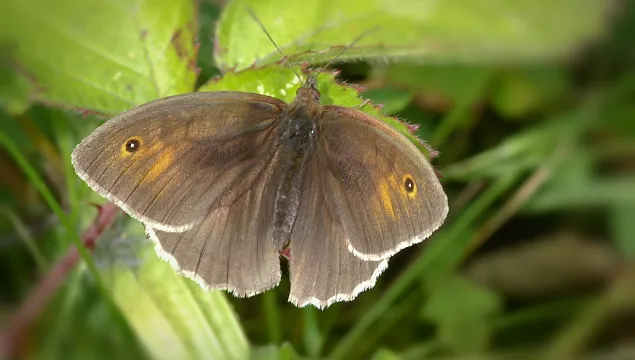Spiked water-milfoil
Look out for the feathery leaves of Spiked water-milfoil just below the surface of streams, ditches, lakes and ponds; its red flowers emerge from the water in summer. It provides shelter for a range of aquatic wildlife.
Look out for the feathery leaves of Spiked water-milfoil just below the surface of streams, ditches, lakes and ponds; its red flowers emerge from the water in summer. It provides shelter for a range of aquatic wildlife.
Greater burdock is familiar to us as the sticky plant that children delight in, frequently throwing the burs at each other. It actually uses these hooked seed heads to help disperse its seeds.
An easily overlooked orchid, the Common twayblade is yellow-green and less showy than other UK orchids. Look for it in woodlands and grasslands on chalky soils, in particular.
The Bird's-nest orchid gets its name from its nest-like tangle of roots. Unlike other green plants, it doesn’t get its energy from sunlight. Instead, it grows as a parasite on tree roots, so its brownish-yellow flowers look a bit sickly.

The bee orchid is a sneaky mimic - the flower’s velvety lip looks like a female bee. Males fly in to try to mate with it and end up pollinating the flower. Sadly, the right bee species doesn’t live here, so this orchid is self-pollinated in the UK.
The Early purple orchid is one of the first orchids to pop up in spring. Look for its pinkish-purple flowers from April, when bluebells still carpet our woodland floors. Its leaves are dark green with dark spots.

The speckled wood prefers the dappled sunlight of woodland rides and edges, hedgerows and even gardens. Despite declines, its range has spread over recent years.

The wall brown or 'wall' gets its name from the fact it rests on any bare surface or wall! It can be found in open, sunny places like sand dunes, old quarries, grasslands and railway cuttings.

The striking black-and-white checks of the marbled white are unmistakeable. Watch out for it alighting on purple flowers, such as field scabious, on chalk and limestone grasslands and along woodland rides.

The grayling is one of our largest brown butterflies and a master of disguise - its cryptic colouring helps to camouflage it against bare earth and stones in its coastal habitats and on inland heathlands.

The gatekeeper is on the wing in summer on grasslands, in woodlands and along hedgerows. Look out for the large, distinctive eyespot with two 'pupils' on each forewing.

One of our most common butterflies, the meadow brown can be spotted on grasslands, and in gardens and parks, often in large numbers. There are four subspecies of meadow brown.